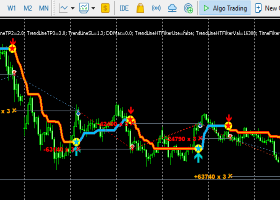
(13 January 2020)DAILY MARKET BRIEF 2:Risk-on: attention shifts to US-China phase one deal
Equities started the week on a mixed note after stocks in the Wall Street fell from their all-time highs on Friday following a
disappointing jobs report in the US.
The US economy added 145’000 new jobs in December versus 160’000 expected by analysts. Last month’s figure was revised down by 10K to
256’000. The unemployment in the US remained at a fifty-year low of 3.5%, but the earnings growth slowed unexpectedly to 0.1%
month-on-month from 0.3% printed a month earlier.
Weak jobs report weighed on the US dollar and the sovereign yields, but investors didn’t change their expectation that the Federal
Reserve (Fed) would stay pat at the January monetary policy meeting. Not only that the Fed is not expected to cut rates in the coming months,
but according to the CME’s Fedwatch tool, the market prices in nearly 10% chances of a 25-basis-point hike by January 29.
Stocks in Seoul (+1.04%) and Hong Kong (+1.00%) gained on increased optimism that the US and China would finally seal the phase-one deal on
Wednesday. Australia’s ASX 200 (-0.37%) eased as energy stocks (-1.24%) led losses on cheaper oil. Japan was closed due to bank holiday.
WTI crude opened at $59 a barrel as a commercial flight accidentally downed by an Iranian missile increased anxiety in the streets,
although the tensions between the US and Iran deescalated last week. It appears that the worst is now behind. Hence, a deeper downside
correction in oil should push the price of a barrel toward $57.85, the 200-day moving average.
Gold retreated to $1553 an ounce as risk-on trades pushed capital toward riskier assets.
In the FX markets,
improved risk appetite sent the Swiss franc and the Japanese yen lower against the greenback. Antipodeans and the euro gained in Asia.
The pound was the biggest loser among the G10 versus the greenback in the overnight trading session. Cable traded at 1.3020 ahead of the
production and GDP data release in the UK. Weak data could further revive the dovish pressure at the heart of the Bank of England’s (BoE)
monetary policy committee amid some MPC members including Mark Carney said they would consider cutting rates if weakness in data
persisted.
Today’s data should confirm that the GDP growth in the UK has stagnated in November, as the political uncertainties and the Brexit
shenanigans have taken a toll on the business investment and consumption during the fourth quarter of last year. And even with more
political stability following the Conservative’s decisive victory in December, uncertainties regarding if and how the trade
relationship between the UK and the EU would shape will likely continue curbing investors’ appetite in the coming months. For now, the pound
looks stable near the 1.30 mark, which also matches the major 38.2% Fibonacci retracement on October – January rally. If soft data triggers a
fall below this level, buyers will likely chase dip buying opportunities. On the topside, offers should remain in charge above the 1.32 mark
as it appears like 2020 may be another frantic year with the second part of the Brexit saga beginning to play. What’s up next is certainly no
less complicated than the triggering of the Article 50. The year has started with European leaders voicing their concerns that Boris
Johnson’s endeavour to ink a comprehensive trade deal within a year is somewhat unrealistic. It would rather take multiple years to discuss
and to agree on every aspect of a comprehensive trade deal.
What is more realistic this week is seeing the phase one deal between the US and China being finally cemented, a development that
investors have been waiting for more than a year and a half. The completion of the phase-one deal could give investors a certain relief, but it
is unsure whether the signature of a deal would generate a further stock rally, or it would rather bring investors to realize their profits
after reaching their target amid US stocks hit fresh historical highs on the run-up to this most-expected agreement. Anyway, the phase one
deal will certainly not be the end of the dispute between the US and China, though it will undoubtedly relieve some of the pressure on China’s
economy before the Chinese New Year as it will bring along tariff cuts in exchange of massive US farm and manufactured goods purchases from
China and concessions on its most criticized practices on intellectual property.
A deal could also help investors better welcoming the Chinese GDP data on Friday, which has certainly remained unchanged at the
three-decade low of 6%.
By Ipek Ozkardeskaya


